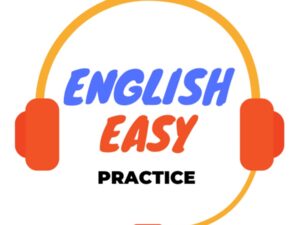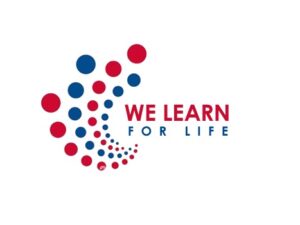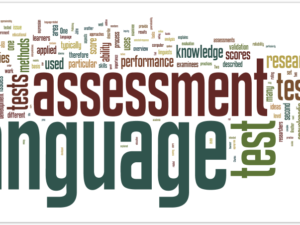Report Writing & Language Communication 001
- Description
- Curriculum
- FAQ
- Notice
- Reviews

Report Writing & Language Communication Course is designed to enhance participants’ skills in crafting effective written reports and improving their overall communication abilities. The course typically covers various aspects, including:
-
Report Writing Skills: Participants learn how to structure and format reports, ensuring clarity and coherence. This involves understanding the purpose of different types of reports, organizing information logically, and using appropriate language and tone.
-
Language Proficiency: The course aims to improve language usage, grammar, and vocabulary to ensure precision and professionalism in written communication. Participants often engage in exercises to enhance their command of the English language.
-
Critical Thinking and Analysis: The course may encourage participants to develop critical thinking skills, enabling them to analyze information, draw meaningful conclusions, and present insights in a well-structured manner.
-
Editing and Proofreading: Attention to detail is crucial in professional communication. The course may cover techniques for effective editing and proofreading to eliminate errors and ensure the final report is polished and error-free.
-
Visual Communication: Some courses may include instruction on incorporating visuals, such as charts and graphs, into reports to enhance understanding and engagement.
-
Communication Ethics: Participants may explore ethical considerations in communication, understanding the importance of honesty, transparency, and professionalism in reporting.
-
Presentation Skills: While the primary focus is on written communication, some courses may touch upon presentation skills for effectively conveying information verbally.
-
Practical Application: The course may include practical exercises, case studies, and real-world of work scenarios to allow participants to apply the concepts they learn in a hands-on manner.
By the end of the course, participants are expected to have a solid foundation in report writing and enhanced language communication skills, empowering them to create clear, concise, and impactful written communication in various professional contexts.
-
1Simple Sentences
Objectives of the Lesson
i. Identifying Components: Learners to recognize the basic components of a simple sentence, such as subjects and predicates.
ii. Understanding Sentence Structure: Help learners grasp the concept of subject-verb agreement and the basic structure of a simple sentence.
iii. Creating Independent Clauses: Teach learners how to create independent clauses that can stand alone as complete thoughts.
iv. Punctuation Skills: Introduce basic punctuation rules related to simple sentences, such as the use of periods and capitalization.
v. Building Vocabulary: Encourage the use of a variety of vocabulary to enhance the quality of simple sentences.
vi. Writing Practice: Provide opportunities for learners to practice constructing their own simple sentences through writing exercises.
vii. Expanding Sentences: Show learners how to expand simple sentences by adding descriptive words, phrases, or clauses.
viii. Grammar Awareness: Introduce or reinforce basic grammar concepts related to simple sentences, such as the role of articles, pronouns, and adjectives.
ix. Communication Skills: Develop oral communication skills by encouraging students to express themselves using clear and concise simple sentences.
x. Critical Thinking: Foster critical thinking skills by prompting students to analyze and evaluate the effectiveness of different simple sentences.
Overall, the goal is to provide a solid foundation in understanding and constructing simple sentences, which serves as the building block for more complex structures in language and writing.
-
2Simple Sentence Quiz 1
-
3Simple Sentences Assignment 1
-
4Compound Sentence Structures
Learning Objective
Learners will be able to create compound sentences using a coordinating conjunction.
-
5Compound Sentences Quiz 1
-
6Compound Sentences Assignment 1
-
7Complex Sentences
Objectives of the lesson
-
Identify Independent and Dependent Clauses:
- Students will learn to distinguish between independent and dependent clauses.
- Students will practice identifying these clauses in given sentences.
-
Recognize Subordinating Conjunctions:
- Students will be able to recognize common subordinating conjunctions that signal the beginning of dependent clauses.
- Students will understand the role of subordinating conjunctions in creating complex sentences.
-
Construct Complex Sentences:
- Students will practice combining independent and dependent clauses to create well-formed complex sentences.
- Students will be able to use appropriate punctuation to join clauses effectively.
-
Understand Sentence Variety:
- Students will grasp the importance of using complex sentences to add variety and sophistication to their writing.
- Students will analyze examples to see how complex sentences contribute to the overall structure and flow of a piece of writing.
-
-
Assessment of Understanding:
- Students will be assessed through quizzes, assignments, or other means to evaluate their understanding of complex sentences.
- Formative assessments will gauge progress, while summative assessments will measure mastery of the topic.
-
-
8Complex Sentences Quiz 1
-
9Complex Sentences Quiz 2
-
10Complex-Compound Sentences
Objectives of the lesson
-
Definition and Identification:
-
Define a compound-complex sentence.
-
Identify and distinguish compound-complex sentences from simple, compound, and complex sentences.
-
-
Components of a Compound-Complex Sentence:
-
Understand the combination of independent and dependent clauses in a compound-complex sentence.
-
Recognize the presence of both coordinating and subordinating conjunctions.
-
-
Punctuation Rules:
-
Learn and apply punctuation rules associated with compound-complex sentences.
-
Understand how correct punctuation enhances clarity in writing.
-
-
Independent and Dependent Clause Relationships:
-
Understand the relationships between independent and dependent clauses in compound-complex sentences.
-
Practice combining independent and dependent clauses effectively.
-
-
Coordinating and Subordinating Conjunctions:
-
Explore the use of both coordinating and subordinating conjunctions in compound-complex sentences.
-
Identify common examples of each type of conjunction.
-
-
Objectives of the lesson
-
Types of Dependent Clauses:
-
Differentiate between different types of dependent clauses in compound-complex sentences.
-
Analyze how the choice of dependent clause type affects the overall meaning and structure.
-
-
Sentence Structure Variety:
-
Discuss the importance of sentence structure variety in writing.
-
Explore how compound-complex sentences contribute to a more sophisticated and nuanced writing style.
-
-
Application in Writing:
-
Apply the knowledge of compound-complex sentences in practical writing exercises.
-
Write original sentences and paragraphs using compound-complex sentences to convey ideas effectively.
-
-
Editing and Revising:
-
Develop skills in editing and revising compound-complex sentences for clarity, conciseness, and effectiveness.
-
Provide feedback on peers' compound-complex sentences to improve overall writing.
-
-
Critical Analysis:
-
Critically analyze the use of compound-complex sentences in different genres of writing (e.g., academic, creative, technical).
-
Discuss how authors strategically use compound-complex sentences for rhetorical impact.
-
-
Transition Words:
-
Introduce and use transition words to enhance the flow of ideas within and between clauses in compound-complex sentences.
-
Discuss how transition words contribute to coherence in writing.
-
-
Integration of Clauses:
-
Explore techniques for integrating clauses seamlessly in compound-complex sentences.
-
Analyze examples where the integration enhances the overall effectiveness of the sentence.
-
These objectives aim to provide a comprehensive understanding of compound-complex sentences, from their basic structure to their application in various writing contexts. The lesson could involve a mix of theoretical concepts, hands-on exercises, and discussions to reinforce the understanding and application of compound-complex sentences.
-
-
11Put the verbs in brackets into the correct tense and form 001
-
12Put the verbs in brackets into the correct tense and form 002
-
13Premodifiers and Postmodifiers in Sentences
Objectives of the Lesson
-
Understanding the Basics:
- Define premodifiers and postmodifiers.
- Differentiate between premodifiers and postmodifiers.
-
Identifying Examples:
- Recognize examples of premodifiers and postmodifiers in sentences.
- Analyze how premodifiers and postmodifiers enhance meaning and description.
-
Grammar Rules:
- Learn and apply grammar rules associated with premodifiers (e.g., adjectives, determiners) and postmodifiers (e.g., relative clauses, prepositional phrases).
-
Placement and Order:
- Understand the typical placement and order of premodifiers and postmodifiers in English sentences.
- Explore how changing the order can impact meaning and style.
-
Enhancing Descriptive Writing:
- Practice incorporating premodifiers and postmodifiers to add detail and depth to written expressions.
- Discuss how modifiers contribute to creating vivid and nuanced descriptions.
-
Sentence Structure:
- Explore how premodifiers and postmodifiers contribute to the overall structure of a sentence.
- Discuss how modifiers affect the flow and coherence of written and spoken language.
-
Common Errors:
- Identify and correct common errors related to the use of premodifiers and postmodifiers.
- Discuss strategies for avoiding ambiguity and improving clarity.
-
Application in Communication:
- Apply knowledge of premodifiers and postmodifiers in real-life communication.
- Engage in activities such as writing exercises, discussions, or presentations to reinforce learning.
-
Critical Analysis:
- Critically evaluate the impact of modifiers on different writing styles and genres.
- Discuss examples where the use of modifiers enhances or detracts from the intended message.
-
Interactive Exercises:
- Engage in interactive exercises such as sentence construction, group discussions, or peer reviews to reinforce understanding and application.
-
Assessment:
- Assess comprehension through quizzes, assignments, or practical exercises that require the proper use of premodifiers and postmodifiers.
These objectives aim to provide a comprehensive understanding of premodifiers and postmodifiers, their grammatical functions, and their practical application in effective communication. The lesson could be designed to cater to various learning styles, incorporating both theoretical and practical components to reinforce the concepts.
-
-
14Fill in the blank with the correct adjective or adverb.
-
15Replace the CAPITALIZED words with the word or phrase that is grammatically correct. If the sentence is correct as is, choose answer a.
-
16Premodifiers & Post Modifiers Quiz 003
-
17Sentence Transformation
Objectives of the lesson
-
Understanding Sentence Types:
-
Differentiate between simple, compound, complex, and compound-complex sentences.
-
Identify the structural elements of each sentence type.
-
-
Recognizing Sentence Patterns:
-
Identify common sentence patterns and structures.
-
Understand how sentence transformation involves changing the structure while preserving meaning.
-
-
Applying Grammatical Structures:
-
Apply knowledge of grammatical structures, such as clauses and phrases, in sentence transformation.
-
Understand how the transformation process can involve combining or reordering these structures.
-
-
Transforming Simple to Compound Sentences:
-
Learn techniques for transforming simple sentences into compound sentences.
-
Practice combining independent clauses using coordinating conjunctions.
-
-
Transforming Simple to Complex Sentences:
-
Learn techniques for transforming simple sentences into complex sentences.
-
Practice adding dependent clauses or modifying sentence structures.
-
-
Transforming Compound to Complex Sentences:
-
Learn techniques for transforming compound sentences into complex sentences.
-
Practice adding dependent clauses to one or more of the independent clauses.
-
-
Transforming Active to Passive Voice:
-
Understand the concept of active and passive voice.
-
Practice transforming sentences between active and passive voice while maintaining meaning.
-
-
Transforming Declarative to Interrogative Sentences:
-
Learn techniques for transforming declarative sentences into interrogative sentences.
-
Understand the changes in word order and the addition of question words or auxiliary verbs.
-
-
Transforming Affirmative to Negative Sentences:
-
Learn techniques for transforming affirmative sentences into negative sentences.
-
Understand the changes in word order and the addition of negative elements.
-
-
Maintaining Coherence and Clarity:
-
Emphasize the importance of maintaining coherence and clarity during sentence transformation.
-
Practice techniques for ensuring that transformed sentences convey the intended meaning effectively.
-
-
Editing and Revising:
-
Develop skills in editing and revising transformed sentences for grammatical correctness and clarity.
-
Provide feedback on peers' transformed sentences to improve overall writing.
-
-
Creative Sentence Transformation:
-
Encourage creativity in sentence transformation by exploring alternative ways to convey the same meaning.
-
Discuss the impact of stylistic choices on the overall tone and style of writing.
-
These objectives aim to guide students through various aspects of sentence transformation, covering different sentence types and structures. The lesson could include practical exercises, collaborative activities, and discussions to reinforce the understanding and application of sentence transformation techniques.
-
-
18Agreement: 501 G & W Set 20
-
19Replace the underlined words with the phrase that best completes the sentence. If the sentence is correct as is, choose a. (Agreement: 501 G & W Set 21)
-
20Agreement: 501 G & W Set 22
-
21Agreement: 501 G & W Set 23
-
22Reported Speech: Tenses
-
23Reported Speech Quiz 1
-
24Reported Speech: No Tense Changes
-
25Reported Speech Quiz 2
-
26Reported Speech: Questions, Commands & Requests
-
27Reported Speech Quiz 3
-
28Reported Speech: Reported Verbs
-
29Reported Speech Quiz 4
-
30Active & Passive Voice
-
31Active and passive voice quize 1 :A sentence has been given in Active/Passive voice. Out of the four alternatives suggested below, select the one which best expresses the same sentence in Passive/Active voice
-
32Passive Voice Quiz 2:Choose the right passive form from the answers given
-
33Active and Passive Voice Quiz 3:Change from active to passive voice. Select the correct answer
-
34Writing Sentences
LESSON SUMMARY
In this lesson, you will look at the parts of a sentence, learn to spot
complete and incomplete sentences, and revise sentence fragments
and run-on sentences.
-
35Proofreading Revising & Editing Assignment 1
-
36Proofreading Revising & Editing Assignment 2
-
37Proofreading Revising & Editing Assignment 3
-
38Pretest: Proofreading, Revising & Editing
-
39Avoiding Awkward Sentences
LESSON SUMMARY
This lesson deals with identifying and revising awkward sentences.
When sentences are so long that they are hard to follow or so short
that they sound choppy, they need thorough revision. Careful and
skillful revising techniques will give a piece of writing a natural rhythm
and flow.
-
40Proofreading Revising & Editing Assignment 4
-
41Proofreading Revising & Editing Assignment 5
-
42Creating Sentence Variety
LESSON SUMMARY
In this lesson, you will learn to revise your writing by combining sentences
and by varying their length and type. The best writing uses a
variety of sentence lengths and styles.
-
43Proofreading Revising & Editing Assignment 6
-
44Proofreading Revising & Editing Assignment 7
-
45Choose the best conjunction to combine each sentence pair.
-
46Why Proofreading, Revising & Editing is important
Brief comments on understanding writing process
-
47Video: Why Proofreading, Revising & Editing is important
-
48Importance of Organization Communication
-
49Assignment 1: Organization Communication & Report Writing
-
50Types of written communication
-
51Assignment 2: Organization Communication & Report Writing
-
52Post test: Proofreading, Revising & Editing
-
53A definition of organisation report
-
54Assignment 3: Organization Communication & Report Writing
-
55Why do we write reports?
-
56Assignment 4: Organization Communication & Report Writing
-
57Characteristics of Organization reports
-
58Assignment 5: Organization Communication & Report Writing
-
59Stages of Report Writing
-
60Assignment 6: Organization Communication & Report Writing
-
61Assignment 7: Organization Communication & Report Writing
-
62Planning: Define the Purpose and Scope of the Report
-
63Assignment 8: Organization Communication & Report Writing
-
64Planning: Consider the Audience
-
65Assignment 9: Organization Communication & Report Writing
-
66Planning: Gather Information for the Report
-
67Assignment 10: Organization Communication & Report Writing
-
68Planning: Design the Structure of a Organization Report
-
69Assignment 11: Design the structure
-
70Writing the Executive Summary & Abstract
-
71Assignment 1: Writing the Report
-
72Writing the Abstact
-
73Assignment 2: Writing the Report
-
74Writing the Introduction & Background
-
75Assignment 3: Writing the Report
-
76Assignment 4: Writing the Report
-
77Writing the Main Body (Methodology)
Writing a methodology is an essential part of presenting research findings. Your methodology is a detailed description of the research process you used to support your findings and it explains your techniques and creates a roadmap for how you reached your conclusions. A well-written methodology not only describes the tactics you used but also presents the case for why you chose the methods you used.
-
78Assignment 5: Writing the Report
-
79Writing the Main Body (Findings)
The results section is where you report the findings of your study based upon the methodology [or methodologies] you applied to gather information. The results section should state the findings of the research arranged in a logical sequence without bias or interpretation.
-
80Assignment 6: Writing the Report
-
81Writing the Main Body (Recommedations)
Recommendations are often included with a report’s conclusion, although they serve different purposes. Whereas a conclusion offers you the opportunity to summarize or review your report’s main ideas, recommendations suggest actions to be taken in response to the findings of a report. You can regard recommendations as a prompt to action for your readers.
-
82Assignment 7: Writing the Report
-
83Writing the Main Body (Conclusion)
-
84Assignment 8: Writing the Report
-
85Writing Complete Reports
Writing Complete Reports
-
86Assignment 9: Writing the Report
-
87Assignment 10: Writing the Report
No classes from Monday, 06th Jan 2024







